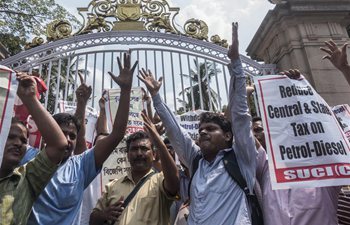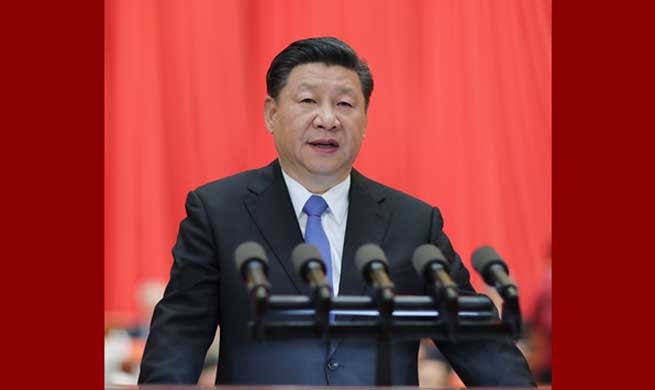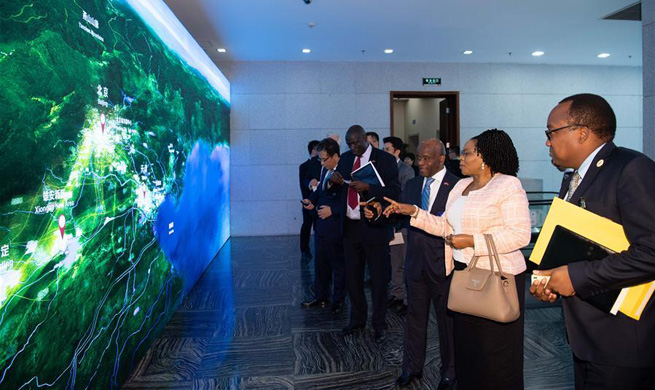BEIJING, May 28 (Xinhua) -- The Belt and Road Initiative has placed China's currency, the renminbi (RMB), on a stable path towards internationalization, according to a new report.
"The world's largest economic corridor is expected to expedite the use of RMB for trade, financing and investment," said the report jointly prepared by financial magazine The Asian Banker and China Construction Bank.
The report covered several areas, including the rate of internationalization, initiatives influencing internationalization, industry sentiment, RMB-denominated financial assets held abroad, and foreign RMB bond-holding.
It showed the pace of RMB internalization picked up in 2017 with the initiative's promising potential, according to the report based on a survey of 398 Chinese and overseas enterprises and financial institutions.
When asked what factors had had the maximum impact on RMB internationalization, 72 percent of respondents, including 80 percent of Chinese corporations, voted for the Belt and Road Initiative.
China expects its annual trade with countries along the Belt and Road route to surpass 2.5 trillion U.S. dollars within the next decade.
Other key initiatives driving RMB internationalization include the inclusion of RMB into Special Drawing Rights currency basket by the International Monetary Fund and policies to further open the market released by Chinese regulators.
The Special Drawing Rights inclusion marked not only a vote of confidence in RMB as an international currency but also solidified China's commitment to financial liberalization, according the report.
The industry, especially Chinese corporations, is optimistic about increased RMB engagement in 2018, particularly in the areas of trade settlement, offshore deposits, payments and forex transactions.
About 63 percent of Chinese companies, 47 percent of overseas corporations and 57 percent of financial institutions plan to increase their RMB cross-border engagement this year.
In 2017, the internationalization of the renminbi continued to move forward and its status as an emerging international currency was further consolidated.
At the end of 2017, total RMB-denominated financial assets held by foreign institutions and individuals amounted to 4.28 trillion yuan (630 billion U.S. dollars), up 41.3 percent year on year.
Foreign institutions increased RMB bond-holdings by 347.7 billion yuan, and total outstanding yuan bonds held by foreign institutions at the year-end reached a record high level of 1.15 trillion yuan.
"Development of RMB hubs across the world along with long-term enablers such as the Belt and Road initiative and clearer policy directions could further strengthen the RMB's position in international financial markets in the foreseeable future," it said.

















